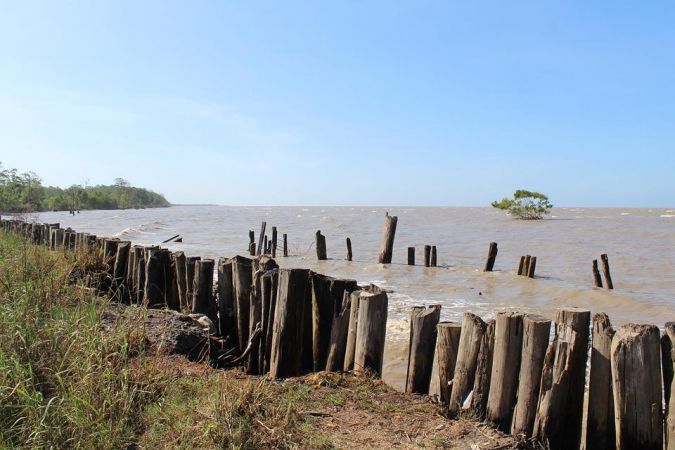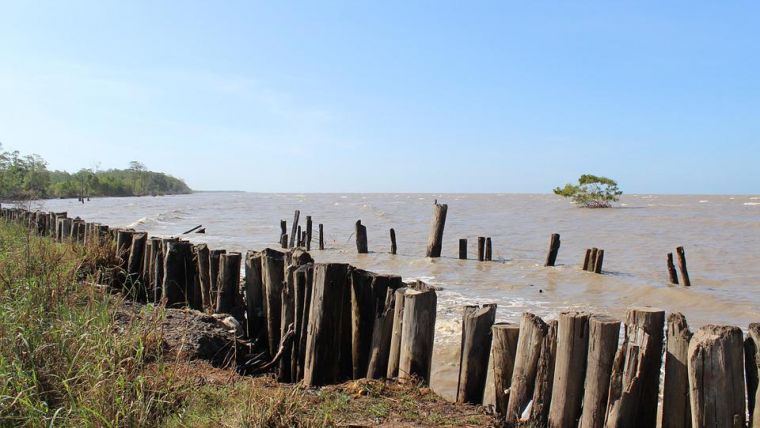Migrating Mud Banks Hinder Coastal Management in Suriname
The Surinamese coast changes constantly. Mangrove tree roots retain sediment, causing the coast to rise along with sea levels, thus providing protection against flooding. However, the supply of sediment is extremely variable. In phases of ten to 15 years, mud banks erode and silt up again, raising or lowering the coast along with mangrove forests. These phases make it difficult to plan for long-term coastal management, especially when mangrove forests are cleared for agriculture: how can you ensure that the coast remains protected, even as these mud coasts erode and silt up as a result of natural processes?
Moving Sediment
In order to prevent erosion, beaches in the Netherlands have to be regularly maintained by adding extra sand. In this way, the beaches are able to rise along with the sea level. In Suriname, this is not necessary: there is more than enough mud naturally present in the form of large mud banks that lie just under the coastal water surface.
Under the influence of tides and waves, these huge banks, some of which can be 20 to 30 kilometres long, migrate along the coast. These migrating banks protect the coast from incoming waves and provide new mud for land accretion; ideal for young mangrove seedlings to develop, or for mature trees to raise the land by retaining more sediment in their roots.
“However, this becomes a problem when, after ten to 15 years, a mud bank has passed the coast again, the natural flow of sediment ceases, and waves get a better grip on the new land,” said Job de Vries, researcher at Utrecht University. “The result is that the coast starts eroding until the next mudbank arrives in ten years’ time.”
Mangroves as Natural Dikes
For coastal protection, it is therefore important to know where the mud banks are and what effect migration has on a stretch of coast. During phases in which the coast expands, policymakers and coastal managers should not become dependent on land that will naturally erode again in ten years’ time, because in addition to contributing to CO2 storage and biodiversity, mangrove forests also provide natural coastal protection.
“There are examples where too many mangroves have been removed in times of land accretion, which has resulted in insufficiently healthy mangroves remaining as a natural buffer during the subsequent erosion phase,” De Vries explained, “with the result that expensive dikes and intensive planting projects are ultimately required.”















